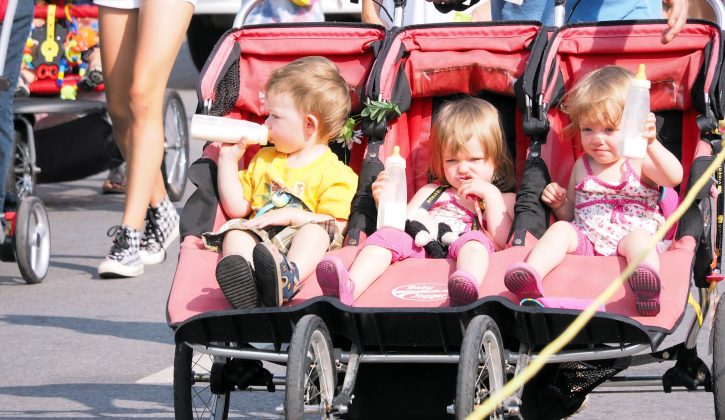After 2016’s record-breaking census—when enthusiastic Canadians memorably crashed the census website—the results are in. Thanks to the reinstatement of the mandatory long-form census (abolished in 2011) these results, which will be rolled out over the course of the year, give us a clearer picture than ever of the fabric of our country—including a clearer picture of what a Canadian family looks like.
The overall takeaway: the national average birth rate is down—a trend that’s been consistent for several decades—but the overall population is up.
The low birth rate, which has been in decline since 1971, is mostly attributed to biology, cost of living, and social trends. More women than ever before are having children at a later age. ‘The longer you delay having the first, the shorter the window you have to have more,’ says Nora Spinks, CEO of the Vanier Institute of the Family. ‘There’s a point at which you can no longer conceive or conceive as efficiently as when you were younger. So that’s where the biology comes in.’
The cost of child-rearing, from daycare to rising post-secondary school costs, is undoubtedly another reason. But sociologist-social demographer Susan McDaniel, a Canada research chair in global population and life course at the University of Lethbridge, explains that it’s not just the financial cost more would-be parents are taking into consideration. There’s an ‘opportunity’ cost as well. Parents are taking into consideration the time and resources they can afford to spend, such as potential time away from the workforce and time investments in a child’s extra-curriculars or sports.
So, birth rates are down. It’s not surprising, nor is it necessarily troubling. (McDaniel points out it may mean parents can invest more time and care into individual children) Yet the population is up. What gives?
The key is immigration. Canada’s overall population has increased 1.7 million since 2011 (the strongest growth of all G7 counties) and newcomers account for two thirds of that growth. It’s a trend the nation has been seeing since the 1990s.

Growth from immigration is likely a trend that’s here to stay—an aging baby boom population means that deaths will soon catch up to the number of births in Canada.
‘Fifty years from now, basically all population growth in Canada will be related to another factor which will be immigration. We know already that natural increase will no longer be a key contributor.’ says Laurent Martel, director of the demography division at Statistics Canada.
One exception? Nunavut, where the population jumped about 13% (since the last census in 2011) thanks to a high birth rate. Women in Nunavut give birth to an average of 2.9 children. The national average is 1.6.
Tagged under: Canada,Canadians,Baby Boom,census results,fertility rates
Category: family-life






